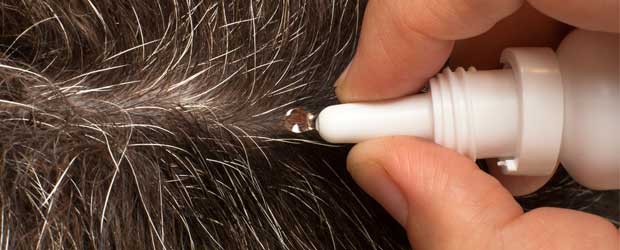Get Rid of Mange in Dogs

For most people, their dogs mean the world to them. Any type of pest that's going to pose a threat to that dog's quality of life is immediately going to be public enemy #1. Fleas and ticks are bad enough, but the sarcoptic mites that cause mange are viewed with even more hatred due to the fact that they actually dig their way into a dog's skin. If that's not justification for all out war, we don't know what is! In any such situation, learning how to get rid of mange in dogs is going to be a priority.
Buy Mange Meds Without Vet Prescription
Instead of staying on the surface of the skin like fleas and ticks do, the reason that sarcoptic mites choose to burrow up to 6cm under a dog’s skin is to lay eggs. Now at this point dog owners are going to be even more horrified and upset! Naturally so, but fortunately mange can be effectively treated and those gosh darn miscreant mites can be exterminated. Let’s look at the best treatment for getting rid of mange in dogs here, as well as answering how long does it take to get rid of mange.
All of which is very important, because it’s not just dogs that can end up being tormented by all of this. Humans should be plenty wary of the harmful potential of mites that cause mange in dogs. That’s because mange can be contagious for humans too. Putting yourself into contact with a dog infected with mange can lead to you having an itchy, purplish rash on your arms, chest, or abdomen. No one wants that!
What Causes Mange for Dogs
We will get to how to get rid of mange in dogs, but the first thing that should be pointed out is that there are 2 types of mange that occur regularly with dogs. The most common one and an unfortunate source of great itchiness for the animal is sarcoptic mange. The dastardly insect behind it is the sarcoptes scabei mite. The long and short of what causes mange in dogs is these mites burrowing (digging) into the dog’s skin to – the horror! – lay eggs beneath the surface. Now if you didn’t have a serious vendetta with this insect before, we bet you will now.
And not only that, but the mite eggs that hatch are doing the same thing themselves in just 3 weeks! That’s the life span for these mites, they’re only around for 21 days or so but if you don’t figure out the best treatment for getting rid of mange in dogs then the whole process repeats itself and your pet continues to suffer.
Next up is demodectic mange, also known as red mange or puppy mange. It’s far less common, but a much more serious affliction if the dog has it. It’s called puppy mange because it is more frequently seen in young dogs, and often times the puppies get it from their mothers. The reason it’s more concerning than sarcoptic mange is that it can lead to secondary infections and even irregularities with the dog’s immune system.
More specifically as to how dogs get mange, it’s most commonly acquired by coming into close contact with a dog or another animal that already has an infestation of the mites. Not all dogs with sarcoptic mange show symptoms, so it’s not so easy to identify another dog that may pose this risk to yours if they get too close. Another predominant risk factor is indirect contact – shared brushes, bedding, or even toys that have been used or enjoyed by another dog with the condition.
Mange Symptoms for Dogs
Learning how to get rid of mange in dogs becomes a priority most times, and that’s because the symptoms of mange are very obvious and it’s equally clear the dog is suffering. These symptoms include:
- Excessive an intense scratching of the skin
- Loss of fur coat thickness, and in entire patches in severe cases of mange
- Itchiness and redness around the ears, belly, chest, and elbows
- Crusty red sores
- Scaling of skin in infected areas
Best Treatment for Getting Rid of Mange in Dogs
This information on how to get rid of mange in dogs is by and large likely the same that you’d get from your veterinarian. Ivermectin, Selamectin, or s-Methoprene are the 3 most common parasiticides used to kill the mites that cause mange. Revolution is a good choice, with Selamectin to relieve dogs from sarcoptic mange. Frontline Plus also kill scabies mites and their eggs, and its active ingredient is s-Methoprene.
Both medications are flea and tick medications for dogs that have the bonus of also working to kill worms and mites too. As such they’re popular choices and frequently recommended by veterinarians as one way for how to get rid of mange in dogs while also receiving effective protection against fleas and ticks.
Another option that is often used in conjunction with these medications is to also bathe your dog very thoroughly using a scabicide shampoo. These can usually be purchased at a pet store without a prescription, and if you do decide to use one then it is best to allow the shampoo to sit on your dog’s skin for at least 5 minutes after you’ve worked it all over their body. Don’t leave it on too long though, and always be sure to rinse it off equally thoroughly.
How long does it take to get rid of mange? If you use these medications and a scabicide shampoo plus some type of skin soothing cream afterwards then most dogs can overcome mange and start to regrow their cat within 6 weeks. This is just an estimate based on average times, however.
Natural Treatment for Dog Mange
You can learn how to get rid of mange in dogs the conventional way listed above, but for some pet owners a more all-natural cure is going to be preferable. This may not be the best treatment for getting rid of mange in dogs, but it is still quite effective and the appeal of it is that it doesn’t involve chemical parasiticides.
Buy Mange Meds Without Vet Prescription
All you need is some Borax powder and 1% hydrogen peroxide. Mix the two ingredients together thoroughly and then bathe your dog while washing them with the solution. Be careful to keep it well away from the dog’s mouth, as ingesting the borax / hydrogen peroxide mix can be harmful if ingested.
You’re now sufficiently in the know with options for how to get rid of mange in dogs.


